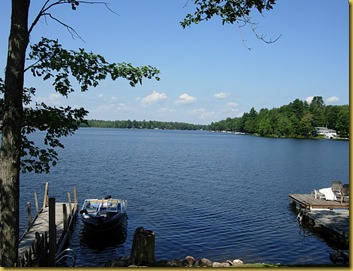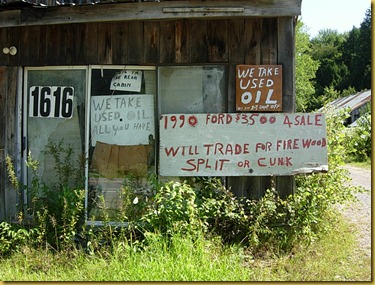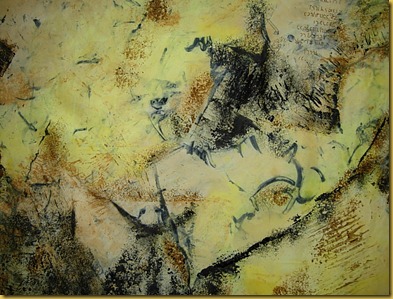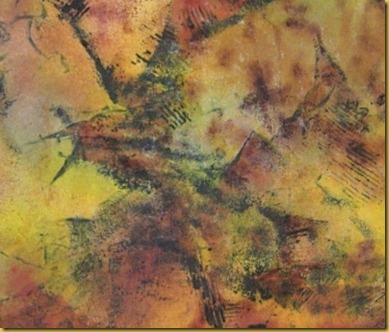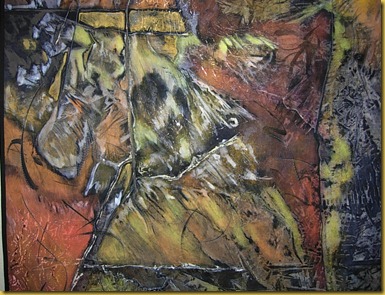My final studio day before heading off to our cottage was a productive one. My new piece is almost ready for the language imagery that will complete it – before I left for vacation, my thoughts took a sudden, playful fork.
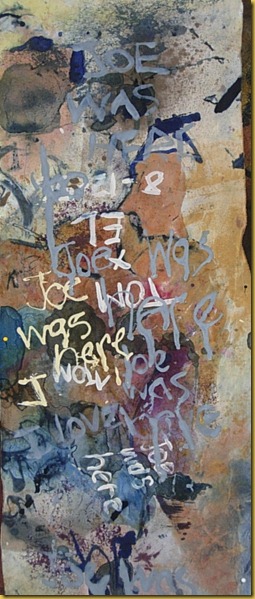 A quick attempt to get some ideas put down on cloth. In previous Relic pieces, I marked the surfaces with ancient inscriptions. Then I began to realize that “ancient” is a relative term – today many people consider the 1950’s ancient. My mind is toying with creating a surface that reflects one young man’s desire for the world to remember him.
A quick attempt to get some ideas put down on cloth. In previous Relic pieces, I marked the surfaces with ancient inscriptions. Then I began to realize that “ancient” is a relative term – today many people consider the 1950’s ancient. My mind is toying with creating a surface that reflects one young man’s desire for the world to remember him.
BUT FIRST – Off to the Lake!
Our small slice of summer perfection – a quiet week at our cottage in Central New York on Panther Lake, a lake so small it looks like a pinpoint on the map!
Perfect summer weather made our time at the cottage a joy. In between kayaking and paddle boating and swimming, I kept the creative fires stoked by reading contemporary drawing books and doing some experimental sketching.
I alternated between making lines and shapes with various pens and graphite and charcoal pencils…
…and even had time to explore the area for interesting hand-lettered signage.
A great vacation!
